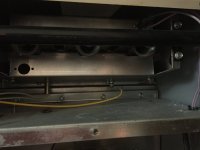Cacher_Chick
Test, Don't Guess!
so a question about how to properly blow out. I do have a air compressor. I'm not sure if that is too strong. I read a few things about blow out procedures. I was able to find a bit about cleaning drain lines, but there is a lot of different thoughts online. Any links that folks would recommend for blow-out procedures?
Don't overcomplcate it. Air needs to flow freely through the tubes. Wrap your mouth around the end of each disconnected hose and blow. If air does not travel freely, figure out why because it is causing the problem. That plastic trap at the bottom too, they must all be clean and clear.

